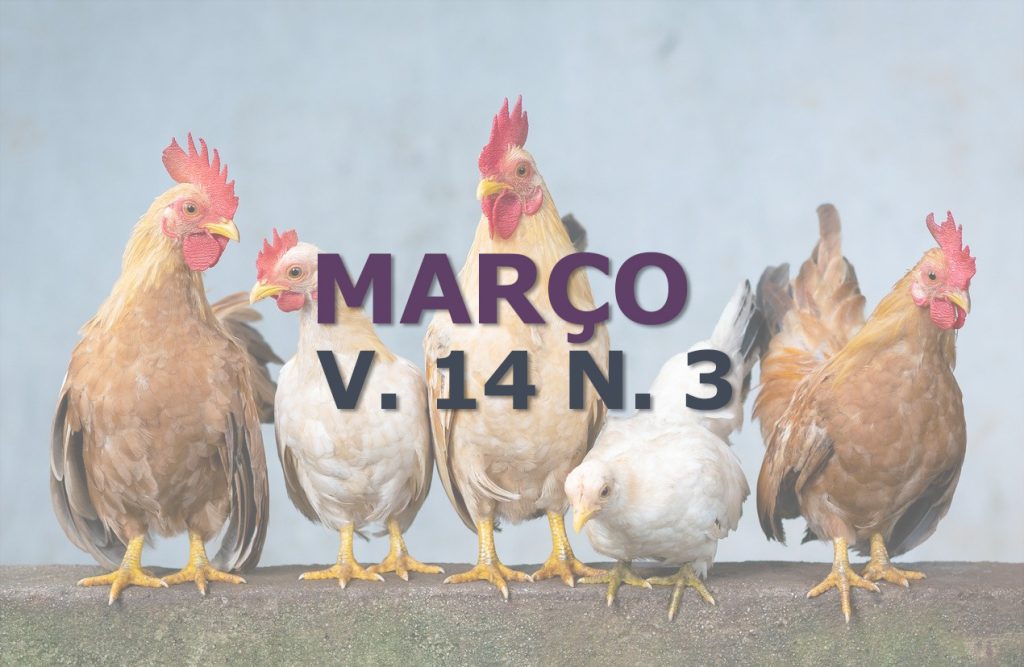Nutritional evaluation of corn and sorgo silages inoculated with Lactobacillus plantarum
DOI:
https://doi.org/10.31533/pubvet.v14n3a536.1-9Keywords:
Animal nutrition, Bacteria, VoluminousAbstract
The forage silage process is one of the main forms of storage, maintaining its nutritional value during periods of drought. Aiming to improve the fermentation process and efficiency in the preservation of silages, microbial inoculants have been used in many rural properties. The objective of this study was to evaluate the nutritional quality of corn and sorghum silage plus doses of Silomax inoculant Corn and Sorghum (Lactobacillus plantarum) as additive at two cutting ages. The experiment was carried out at the Agricultural Center of the Federal Institute of Southeastern Minas - Campus Barbacena. The experimental design was completely randomized in a 2X3 factorial scheme with 5 replicates in PVC silos (30 cm long and 100 mm in diameter), totaling 30 silos for each crop. The inoculant was applied in the following doses: without inoculant (water only); 100 g per ton and 200 g per ton, the same for each cutting age. After 60 days of ensiling, the levels of crude protein (CP), dry matter (DM), neutral detergent fiber (NDF) and acid detergent fiber (FDA) were evaluated. The results showed that sorghum silage was significantly influenced in its DM by treatments (P = 0.0081), and no effects were observed between the ages of cut (P> 0.05) with DM ranging from 27.46 to 29.08% at the first cutting age and from 29.17 to 29.66% at the second cutting age. The use of the bacterial inoculant Lactobacillus plantarum had a consistent effect only on the dry matter levels of sorghum silage, not promoting significant changes on the other analyzed variables.
Downloads
Published
Issue
Section
License
Copyright (c) 2020 Queila Gouveia Tavares, Wellyngton Tadeu Vilela Carvalho, Renata Vitarele Gimenes Pereira, Duarte Carvalho Minighin, Lucas Vieira Silva, Carlos Antunes Oliveira de Carvalho, Ana Carolina Gonçalves e Silva, Luiz Edvaldo Teixeira, Maria Juliete Lucindo Rodrigues, Thiago Batista Rodrigues Miranda, Natália Nunes de Melo

This work is licensed under a Creative Commons Attribution 4.0 International License.
Você tem o direito de:
Compartilhar — copiar e redistribuir o material em qualquer suporte ou formato
Adaptar — remixar, transformar, e criar a partir do material para qualquer fim, mesmo que comercial.
O licenciante não pode revogar estes direitos desde que você respeite os termos da licença. De acordo com os termos seguintes:
Atribuição
— Você deve dar o crédito apropriado, prover um link para a licença e indicar se mudanças foram feitas. Você deve fazê-lo em qualquer circunstância razoável, mas de nenhuma maneira que sugira que o licenciante apoia você ou o seu uso. Sem restrições adicionais
— Você não pode aplicar termos jurídicos ou medidas de caráter tecnológico que restrinjam legalmente outros de fazerem algo que a licença permita.





